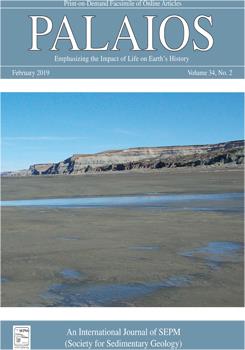Plio-Pleistocene mass extinction of marine bivalves on the U.S. eastern seaboard has been attributed to declines in temperature and primary production. We investigate the relationship of growth rate in the scallop Carolinapecten eboreus to variation in these parameters to determine which contributed to its extinction. We use ontogenetic profiles of shell δ18O to estimate growth rate and seasonal temperature, microgrowth-increment data to validate δ18O-based figures for growth rate, and shell δ13C to supplement assemblage evidence of production. Postlarval growth started in the spring/summer in individuals from the Middle Atlantic Coastal Plain but in the autumn/ winter in some from the Gulf Coastal Plain. Growth rate typically declined with age and was usually higher in summer than winter. Many individuals died in winter but the largest forms typically died in spring, possibly on spawning for the first time. No individuals lived longer than two years and some grew exceedingly fast overall, up to 60% more rapidly than any other scallop species (< 145.7 mm in a year). Faster growth was generally achieved by secreting more rather than larger microgrowth increments. Some very fast-growing individuals lived in settings of high production and low temperature. No individuals grew slowly under high production whereas most if not all grew slowly under ‘average’ production and low temperature. In that the rapid growth evidently enabled by high production would have afforded protection from predators, Plio-Pleistocene decline in production was probably contributory to the extinction of C. eboreus. However, the negative impact of low temperature on growth under ‘average’ production suggests that temperature decline played some part.
How to translate text using browser tools
6 February 2019
LIFE HISTORY, ENVIRONMENT AND EXTINCTION OF THE SCALLOP CAROLINAPECTEN EBOREUS (CONRAD) IN THE PLIO-PLEISTOCENE OF THE U.S. EASTERN SEABOARD
Andrew L.A. Johnson,
Annemarie M. Valentine,
Melanie J. Leng,
Bernd R. Schöne,
Hilary J. Sloane
ACCESS THE FULL ARTICLE
It is not available for individual sale.
This article is only available to subscribers.
It is not available for individual sale.
It is not available for individual sale.

PALAIOS
Vol. 34 • No. 2
February 2019
Vol. 34 • No. 2
February 2019




